Adult Learning Workshop
Material Tales: Research in Action London
The 'Research in Action' workshop was first delivered at the Design Museum in November 2021 by Marta Giralt. The workshop was conducted through a 3 stage process of activities – define, refine and redesign.
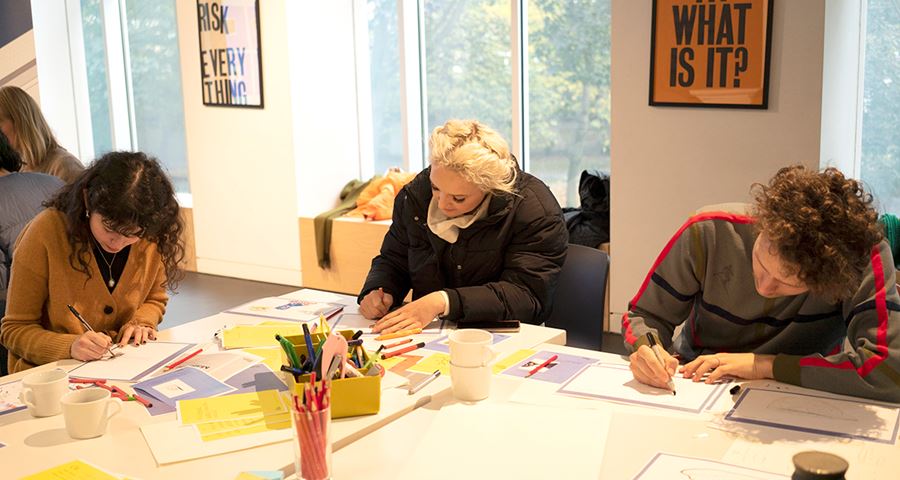
Themes
Participants felt that the 5 themes proposed were globally relevant, and provided a framework through which to interrogate familiar materials by grouping them into typologies. The themes addressed societal issues and allowed participants to explore the values we place upon materials, as well as who has access to these materials.
As well as the proposed themes, participants were invited to nominate additional themes they felt reflected material culture within the UK. They were then asked to identify materials that fit within their chosen themes. The themes that resonated most with participants are listed here, with the materials the London specialists identified shown below.
Grown:
Of the themes proposed by Marta, Grown was the one that resonated with participants most. The designers were interested in the idea of ‘controlled nature,’ and how far grown, manipulated or bio-designed materials can still be called ‘natural.’
Energy:
Energy can be harvested in a variety of ways to create or power objects. But energy forms can also comprise a material itself, with digital designs, for example, created entirely from electrical energy. These materials can usually be accessed globally, without being subject to border regulations, but only with the right tools, and inequal systems dictate who has access to these tools. The environmental impact of energy-based materials is disputed – some, like the weather, are naturally abundant, but others, like electricity, have a hidden carbon footprint.
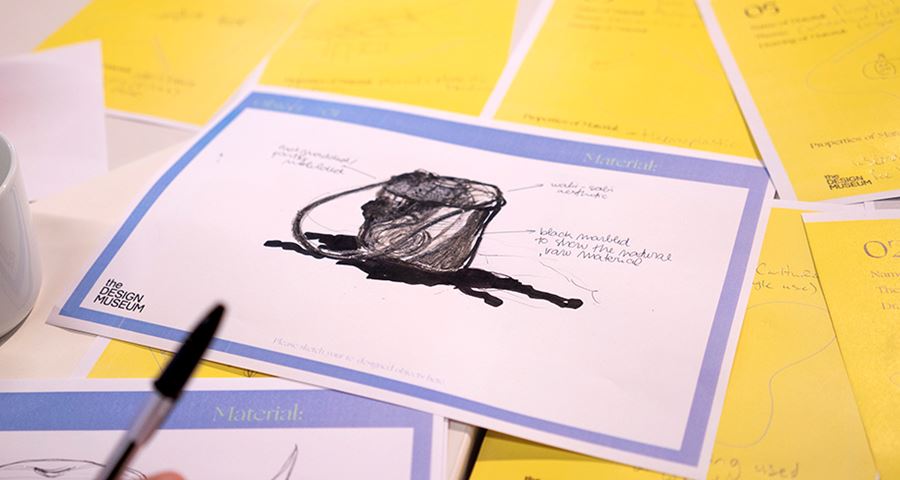
Social and Historical Value:
Different geographical locations have different cultural traditions, and many, like London, play host to a variety of diverse and overlapping traditions, which give rise to unique material cultures.
Participants identified London as having a throwaway culture, with a low value for materials. But London also has a long history of artisanry, of importing raw materials from across the nation and developing them. Certain materials, such as brick, still seem ubiquitous in the urban cityscape. At the same time, these values shift – plastic – the material of the future in the 50s and 60s is now regarded as a throwaway material, and one that should be designed out where possible.
Materials can be iconic, have a social function, or serve a nostalgic purpose. Reflecting on the different ways we apply value to materials, participants questioned the implications of this for new and engineered materials.
Repurposed:
In the face of the climate crisis, it is becoming increasingly important to reuse, recycle and upcycle materials. Repurposed materials might outlive their lifecycle as a pure material, but find a new lease of life as a composite material. Participants noted that you can’t separate a repurposed material from the process of it’s production - these materials generally derive their value through a labour intensive process of redesign.
Adaptive:
The effects of globalisation have had a severe impact on local industries and the environment. This theme brings to the forefront how designers are turning to traditional local materials and manufacturing industries to revitalise local economies and cultural identities. By going hyperlocal we not only celebrate the local vernacular but also reduce our carbon footprint.
Evolving:
Material life cycles vary wildly, from seemingly eternal to the single use. Natural and bio-based materials often have a life-cycle that is not dictated by human designers.
Urban:
These are the materials that we see everywhere in the city, but do not place a high social or nostalgic value upon. This is mostly because we do not fully understand their origins, use or production process.

Insights
Speculative materials and those that are still in the early stages of development cropped up frequently in the participants’ answers, indicating an awareness of and excitement for the potential of future material innovations.
The immaterial were the most interesting to participants (energy, data), finding that they challenged their perspectives on what constitutes making and constituted the cornerstone of most production methods. Participants also felt the workshop challenged them to think more deeply about the materials we see everyday and rarely think about, eg. Plastic, wood.
Participants also felt that there was too rigid a dichotomy between natural and manmade materials – the themes proposed explored fluidity between the two. They also questioned how we evaluate the success of a given material.
Interestingly, a lack of knowledge of the materials that were invented in London, or that London had a history of making, became apparent as the workshop went on. In trying to describe the lifecycles of the materials they had chosen, participants realised that very few materials could really be described as ‘local’, and that the word, so highly valued in marketable materials, was something of a myth.
Overall, participants felt that grouping materials by theme demonstrated the flimsy nature of the values we apply to material.
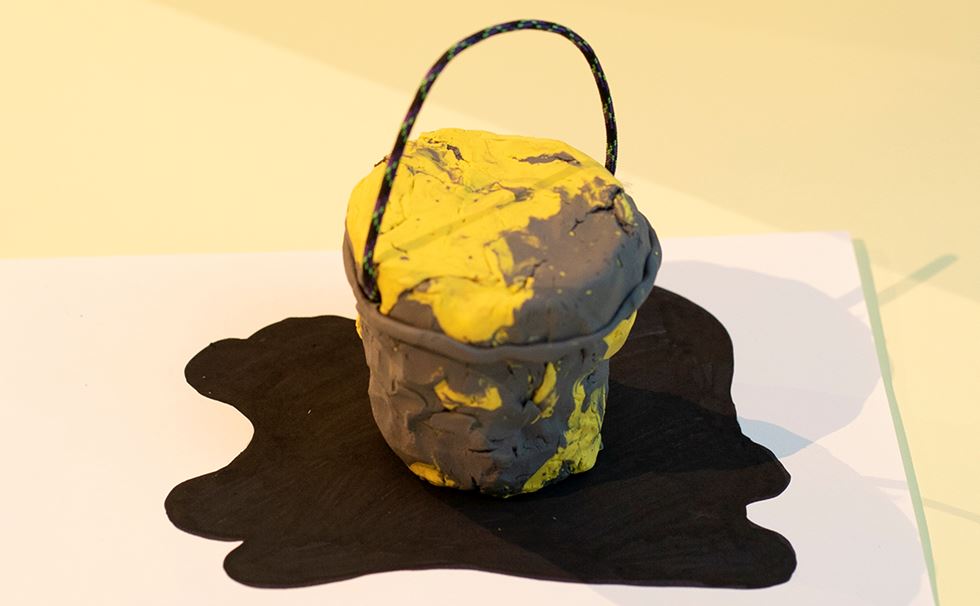
An absorbent cotton sanitary product by Ruta Irbite.
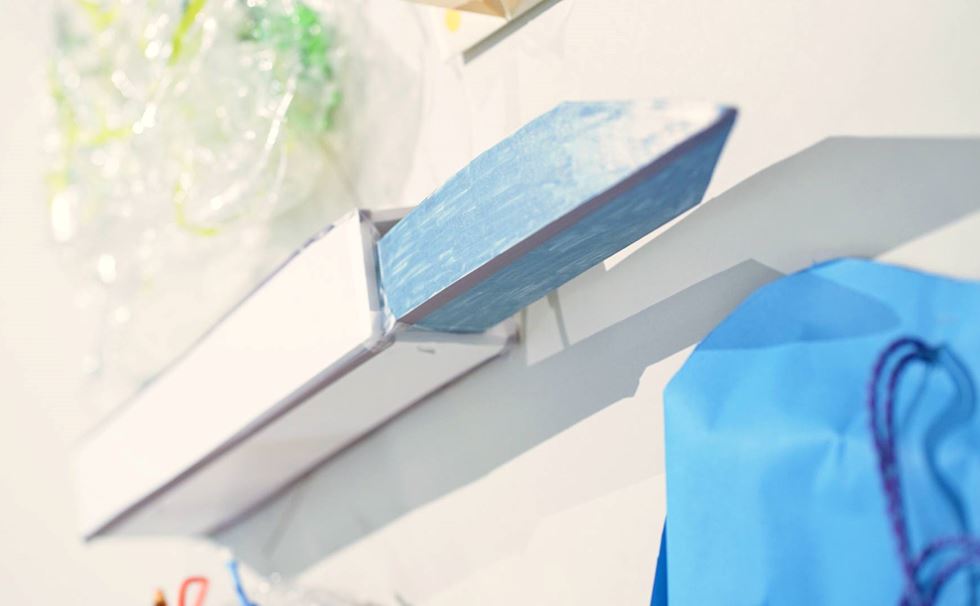
A knife made from ceiling tiles by Sanne Visser.
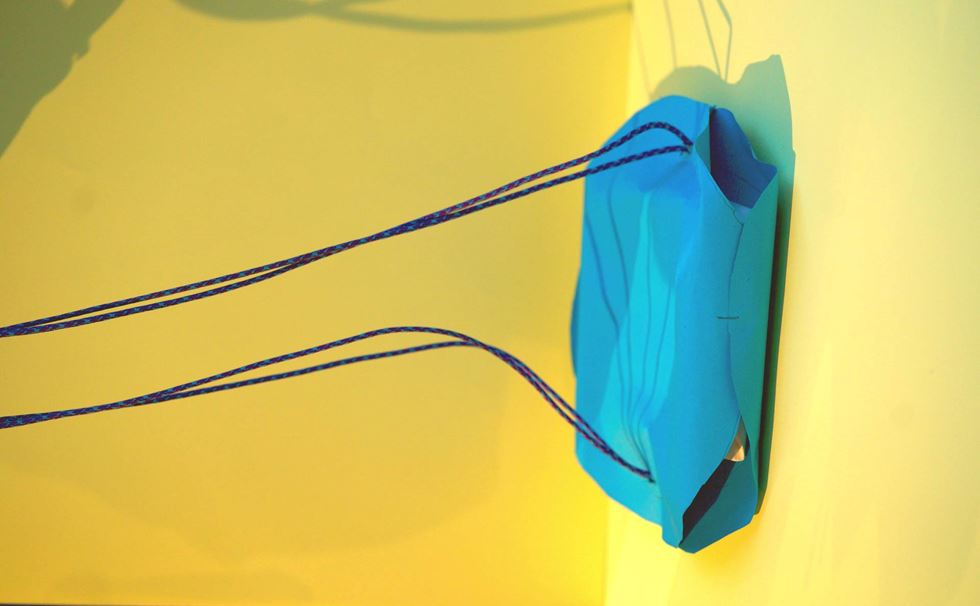
A plastic and horn bucket by Tina Goruanc.

A patchwork textile made of paperfoam, bioplastic and mycelium by Julia Lubner.

. A speculative design for a light made from a cell that uses human kinetic energy to generate light by Elissa Brunato.
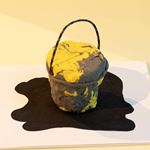


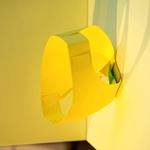

Prototypes
Participants were given a series of iconic designs from the Material Tales exhibition and given the challenge of redesigning them with one of the materials they had identified earlier. This task encouraged participants to think about the purpose of given materials, and to consider to consider whether widely popular and unquestioned designs are now outdated. Once they had redesigned these objects, they were challenged to make imaginary prototypes of them from craft materials. Much like in real prototyping, some materials were not found to improve the designs at all.
Participants
Katie-May Boyd
Katie is an interdisciplinary designer specialising in colour, material and finish with expertise in sustainable and recycled materials. With a background in costume from London College of Fashion and an MA in Material Futures at Central Saint Martins, Katie-may’s work explores boundaries between disciplines, and the role of materials in society.
Alice Potts
Alice Potts is a biomaterial Designer working on developing Sweat crystallisation and bio-based Plastics within the fashion industry. Having studied her MA in Fashion Accessories she has worked freelance the last 3 years having been sponsored by Onassis foundation in Greece and exhibited globally.
Elissa Brunato
Elissa Brunato is a material designer and systems thinker. She researches cross-disciplinary into emerging scientific possibilities, circular systems and materials, curious how these can respond to wider ecological systems. Elissa founded Radiant Matter, a design-led material innovation start-up, developing and scaling sustainable and high performing colour and material solutions for the circular economy. She is the co-founder of AusBlau, a creative studio and consultancy exploring systems surrounding materials.
Christoph Dichmann
Christoph Dichmann is a contextual designer based in London. His work is research-driven and cross-disciplinary, playfully investigating materiality, ecosystems and the human experience. With a focus on mundane material building blocks of the urban landscape, his projects act as probes, prototyping out-of-the discipline thinking and creating narratives for public engagement. He is the Co-founder of AusBlau, a creative studio and consultancy exploring systems surrounding materials.
Britt Berden
Britt Berden is Art Director at The Future Laboratory and is passionate about imaging potential futures and bringing insights and innovations to life. Thanks to her multidisciplinary design background, she applies hybrid thinking to projects as well as identifying new design directions and tracks material innovations that have a meaningful impact on future society and benefit people and planet.
Randa Kherba
Randa Kherba is a research-based designer based in London. With a background in Menswear design focused on fabrication and functionality. Now an Ma Material Futures graduate exploring bio-alternatives to constructing outdoor gear designed for short-term use. Demonstrating a future where gear that protects us from the elements can be created and produced with organisms that are abundant to us.
Rūta Irbite
Rūta Irbite is a London-based Latvian designer. Her background in design for performance with its temporary nature and the amounts of waste it produces has led her to interrogate alternative approaches to materials and processes conventionally employed in design, taking inspiration from the ultimate master of material cycles, nature.
Feedback
Julia L: ‘I learnt so much about alternative materials, especially with reference to textiles. I loved the conversations surrounding interdisciplinary research.’
Ruta: ‘It opened my thinking to the immaterial aspects of materials.’
Wilson: ‘The workshop ‘pushed me to think of novel solutions for well established problems beyond what is currently possible.’
Christoph: ‘The material tales workshop hugely challenged me in the way of categorising materials.’
Get in touch
For more information on this workshop, please contact the team via touring@designmuseum.org
Background image: A self-healing concrete bird feeder by Wilson Oryema. Material Tales London Workshop.